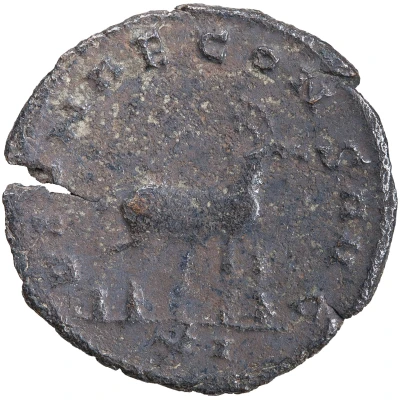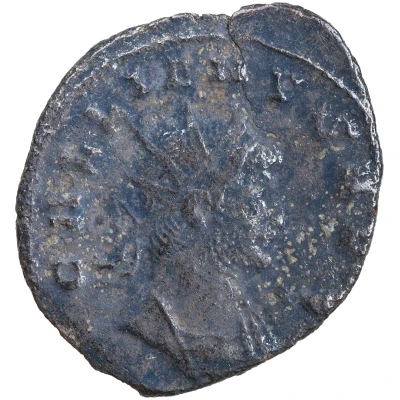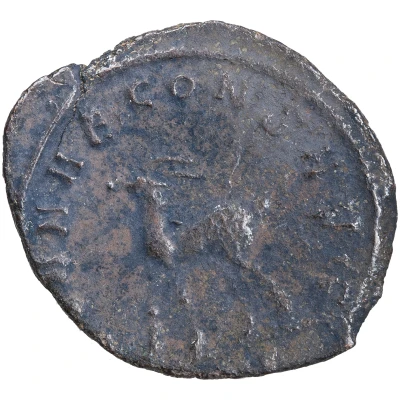


© American Numismatic Society (ANS)
Antoninianus - Gallienus DIANAE CONS AVG
| Silver | 3.1 g | 20.5 mm |
| Issuer | Rome › Roman Empire (27 BC - 395 AD) |
|---|---|
| Emperor | Gallienus (Publius Licinius Egnatius Gallienus) (253-268) |
| Type | Standard circulation coin |
| Years | 260-268 |
| Value | Antoninianus (1) |
| Currency | Antoninianus, Reform of Caracalla (AD 215 – 301) |
| Composition | Silver |
| Weight | 3.1 g |
| Diameter | 20.5 mm |
| Shape | Round (irregular) |
| Technique | Hammered |
| Orientation | Variable alignment ↺ |
| Demonetized | Yes |
| Updated | 2024-10-05 |
| Numista | N#288640 |
|---|---|
| Rarity index | 90% |
Reverse
Antelope, walking right or left. Officina mark in exergue.
Script: Latin
Lettering:
DIANAE CONS AVG
XI
Translation:
Dianae Conservatrix Avgusti.
To Diana, protector of the emperor (Augustus).
Comment
Mass varies: 2.05–4.73 g;Diameter varies: 17–23.4 mm;
Example of this type:
American Numismatic Society (ANS)
Source:
Online Coins of the Roman Empire (OCRE)
Interesting fact
The Antoninianus coin was issued during the reign of Gallienus, who was the Roman Emperor from 260 to 268 AD. During his reign, the Roman Empire was facing numerous challenges, including invasions by barbarian tribes and internal strife. Despite these challenges, Gallienus was able to maintain the empire's stability and issue coins like the Antoninianus, which were used for trade and commerce throughout the empire. It's interesting to note that the coin's design features the image of Diana, the Roman goddess of the hunt, on the reverse side. This suggests that the coin was issued to commemorate a significant event or achievement related to the goddess, or that the emperor wanted to promote the worship of Diana as part of his policies. Overall, the Antoninianus coin is a fascinating piece of history that provides a glimpse into the political, economic, and religious practices of the Roman Empire during the 3rd century AD.

